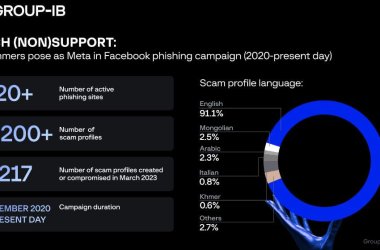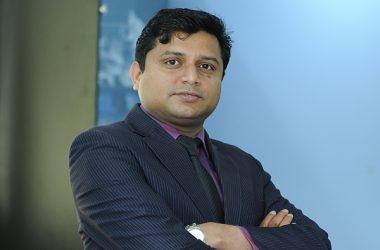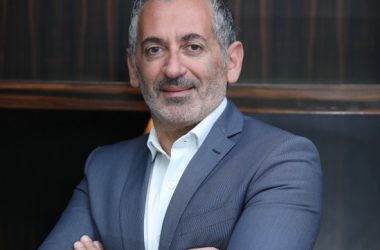 Everybody’s heard of Internet2, the network consortium that connects universities and research communities across the USA. Less have heard of Ankabut, the UAE equivalent of Internet2, which is not only connecting university campuses nationally and internationally, but believes the collaboration will lead to a stark increase in research excellence from the Middle East. Ben Rossi writes.
Everybody’s heard of Internet2, the network consortium that connects universities and research communities across the USA. Less have heard of Ankabut, the UAE equivalent of Internet2, which is not only connecting university campuses nationally and internationally, but believes the collaboration will lead to a stark increase in research excellence from the Middle East. Ben Rossi writes.
August 7th 2006 was quite a momentous occasion for education in the UAE. It marked the day when a memorandum of understanding (MoU) was signed by the Institute of Applied Technology, Khalifa University, United Arab Emirates University, Zayed University and the Higher Colleges of Technology to establish a consortium for a UAE research and education network. That network would be called Ankabut.
The idea was to provide a global private network to connect all those universities that join.
The work wasn’t done, however. A few months later another MoU was signed between Ankabut and Internet2, the USA’s NREN (national research and education network), to provide Ankabut’s connection internationally. That connection was eventually established in October 2008.
Perhaps the most important dates of all though came in 2009. First in April, when an agreement was signed between the ICT Fund and Khalifa University to fund the Ankabut project. And then in July, when another agreement was signed between Khalifa University and Etisalat to build a new NREN in the UAE.
Finally, on June 17th 2010, the Higher Colleges of Technology and Zayed University became the first universities to connect to the network. Ankabut was born.
Two years on and there are now 20 universities connected to the Ankabut network for 56 campuses.
However, it wasn’t all smooth sailing, says Dr. Steven Winstanley, COO at Ankabut.
“People here in the UAE didn’t really understand what NRENs were about, so the uptake wasn’t massive in the beginning of the project,” he says.
“We’re trying to push the boundaries of networking here in the UAE. We’re the GCC’s first dual stack network, so we offer IPv6 from the network all the way around all the other NRENs around the world,” he adds.
So what exactly does the Ankabut offer universities that they haven’t already got?
“In the first instance, we’ve got a national network and are offering larger bandwidth services to universities to be able to connect themselves together,” Dr. Winstanley says.
Ankabut’s basic rate is 1GB per second into a particular campus or university, so multicampus universities are supplied with VPN connectivity to connect those campuses together.
“In the second instant, a smaller university with less staff would go for a cheaper device and send all the traffic down the network and we will then branch off Internet traffic. When we look at the traffic going in and out of a university, 70% of it is rubbish – things like Facebook, YouTube and news websites – and this is a part-and-parcel of everyday life,” Dr Winstanley says.
“It’s the other 30% that’s important to the university – like the eLearning, disaster recovery, grid computing and email services. The network makes sure that 30% has a higher quality and is treated faster and with a greater priority than the other 70% of internet traffic,” he adds.
Dr. Winstanley points to the example of a university doing healthcare research and wanting to transfer x-rays.
“What they need is available bandwidth to be able to send that file there and then. If they want to transfer that traffic back and forth, they need a very large bandwidth connection and they need to put a large impact on that network at that particular moment in time,” he says.
“If you try and do that over the internet, you’re not going to get a very high bandwidth connection, so it’s going to take days to get a large file like an MRI scan through. With the Ankabut network, medical schools are able to get their files backwards and forwards very quickly,” he adds.
Eureka moment
Besides the immediate benefits of connecting to such a network, what the guys behind Ankabut are really hoping for is a “Eureka moment.”
“We need to bring universities together for collaborative research. People have said there will be no Eureka moments, but the Higgs boson discovery happened last week, which was the result of a large collaborative project,” Dr. Winstanley says.
“The reason the network was set up in the first place was to push collaboration. We all know this region well enough to know there is not enough research coming out of the Middle East. So Ankabut is bringing a community together to provide a platform for if and when that infamous Eureka moment comes,” he adds.
Not only has the network’s growth been demonstrated by its rising user list, it has also been representative of the interest in Ankabut’s annual user meeting.
“Three years ago we had our first user meeting and 15 people turned up. Last user meeting had over 350 people and our next user meeting in September we expect to be much larger than that,” Dr. Winstanley says.
Amongst the attendees of the next Ankabut user meeting will be the Middle East Special Interest Group, which brings together scholars, educators and development practitioners interested in the study of the region.
“It’s basically made up of people from Qatar, Kuwait, Saudi Arabia and Oman. Some of these guys have started off examining NRENs and the competitive advantage that we have in the UAE because of this particular network,” Dr. Winstanley says.
“What’s really becoming apparent is that the UAE is the only country in the GCC with a national research and education network and suddenly other people are being left behind because they’re not able to collaborate on the same footing as the UAE. In the same respect, universities in the UAE that don’t join the network are missing a major opportunity,” he adds.
Despite the seemingly large task at hand, Ankabut gets by with an internal team of only eight full-time staff and three interns.
“We’ve maintained ourselves as a very small team doing a very big job. We don’t dig fibre ourselves, we lease fibre. We’ve got a contract with Etisalat which is renewable every five years where we employ them to look after the network. We get them to send a connection and equipment to a particular university. That takes a lot of staff requirements off our books,” Dr. Winstanley says.
“On the technical side we have three staff – a manager and two technical guys. The manager basically runs all the technology space and the other two guys bring up the services on the network within our data centre. The manager also manages the Etisalat partnership. We also outsource quite a bit of stuff, for example we outsource to Huawei for virtual desktop environments,” he adds.
Membership
Whilst the ICT Fund funds Ankabut, Khalifa University houses its team and data centre, and provides the administrative backbone.
To further fund the project, Ankabut charges a membership fee of AED100,000 a year per campus connection.
“Besides providing the connectivity itself, we’ve got disaster recovery, unified communication, high performance communication, high performance computing on the network, distributed grid computing and ISP as in email and web,” Dr. Winstanley says.
In terms of implementation, Ankabut works with Etisalat to determine connectivity, before working with the IT departments in configuration issues. That whole process takes between three and six months, Dr. Winstanley says.
Looking forward, Dr. Winstanley believes Ankabut now needs to engage with the community more.
“We’ve got the network and we’ve got the service platforms – now we need to bring those vendors who can see the fact that we’ve got 60,000 students and 10,000 staff on the network. The vendors can see that this is a great network to be a part of, so we’re getting a lot of interest from vendors wanting to get on that network,” he says.
With the emphasis so far been on looking at some of the university-type of environments, Ankabut is now looking at expanding into other areas.
“Going forward we want to get more into the healthcare sector. This is looking particularly at research in hospitals for example. Also what we need to start to consider is schools. We’re offering 1GB connections to universities, but schools are a different environment because you’re basically dealing with set curricula typically taught from books or constrained media,” Dr. Winstanley says.
“Students don’t need to have the vast amount of resources like the internet because it’s more structured-learning. But they do still need to have communication facilities. Some teachers have difficulty typing out in the more remote areas. One has to look at the whole spectrum of services, from the high performance of computing element all the way down to word processing, getting people to learn to type and getting people email addresses,” he adds.





